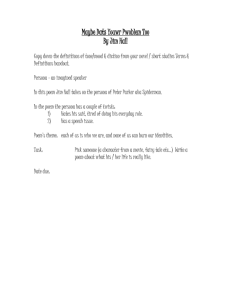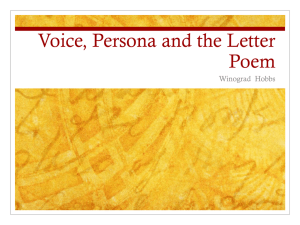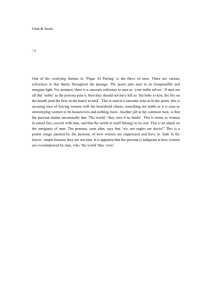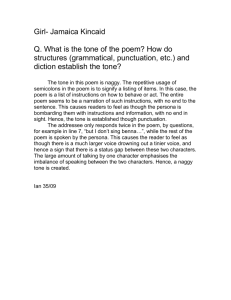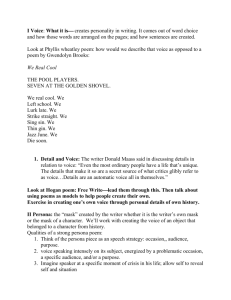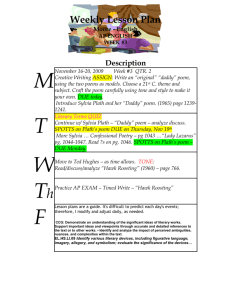An Analysis of Lady Lazarus by Sylvia Plath
advertisement
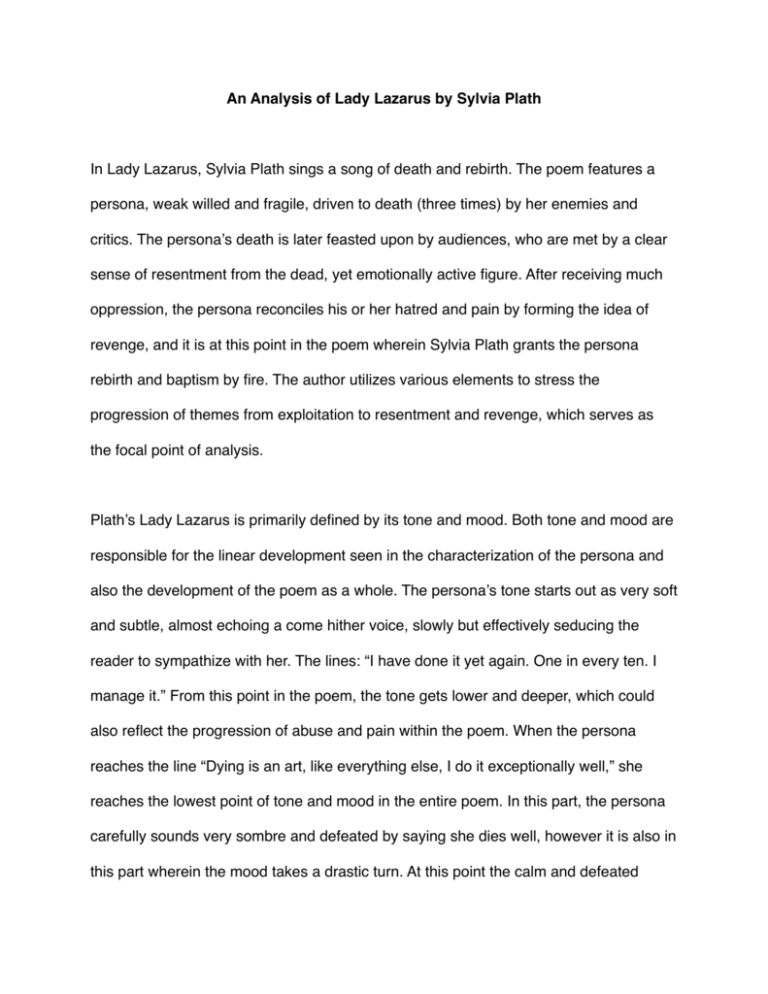
An Analysis of Lady Lazarus by Sylvia Plath In Lady Lazarus, Sylvia Plath sings a song of death and rebirth. The poem features a persona, weak willed and fragile, driven to death (three times) by her enemies and critics. The persona’s death is later feasted upon by audiences, who are met by a clear sense of resentment from the dead, yet emotionally active figure. After receiving much oppression, the persona reconciles his or her hatred and pain by forming the idea of revenge, and it is at this point in the poem wherein Sylvia Plath grants the persona rebirth and baptism by fire. The author utilizes various elements to stress the progression of themes from exploitation to resentment and revenge, which serves as the focal point of analysis. Plath’s Lady Lazarus is primarily defined by its tone and mood. Both tone and mood are responsible for the linear development seen in the characterization of the persona and also the development of the poem as a whole. The persona’s tone starts out as very soft and subtle, almost echoing a come hither voice, slowly but effectively seducing the reader to sympathize with her. The lines: “I have done it yet again. One in every ten. I manage it.” From this point in the poem, the tone gets lower and deeper, which could also reflect the progression of abuse and pain within the poem. When the persona reaches the line “Dying is an art, like everything else, I do it exceptionally well,” she reaches the lowest point of tone and mood in the entire poem. In this part, the persona carefully sounds very sombre and defeated by saying she dies well, however it is also in this part wherein the mood takes a drastic turn. At this point the calm and defeated mood of the poem reaches a turning point as the persona starts expressing anger and power. This is evident, as well, in the change of use of words by the author to exude confidence and newfound strength in the persona, particularly when she first suggests the concept of rebirth, calling it a “theatrical comeback. The gradual ascent reaches its climactic apex when the persona challenges her enemies and even the powers that be with the most powerful lines in the entire poem saying “Out of the ash, I rise with my red hair, and I eat men like air.” The poem features a wide array of subtle metaphors to justify the feeling of bitterness that is located at the point of reconciliation the poem. Sylvia Plath uses the theme of the Holocaust and the German-led genocide, which prompted World War 2. In the poem, there are mentions of various practices that allude to the process of the holocaust such as the use of human fat for soap, or the use of human skin for lampshades. While the metaphors may be quite literal, the actually provide subtle justification persona’s emotion. The utilization of the figures of speech are said to provide the necessary background of hatred and pain that the persona is feeling. By scattering the symbolisms, Plath is able to paint a holistic and coherent picture of sadness and selfpity developing into anger and empowerment within the persona. Apart from this, she uses the image of a phoenix to reinforce the grand and glorious rebirth of the persona as well as the fire of rage the persona is feeling. Fire is primarily attributed to the phoenix, and fire is the primary object that symbolized rage and fury. She also described the persona coming back in red, which also symbolizes rage. The poem is also obsessed with the number “30” using it in various sections of the poem. At the very start, the persona states that she does something once in every ten years. At the middle of the poem, it is stated that the persona dies or tries to die once in every ten years. There is an excessive use of the number thirty associated with death, however the structure of the poem ends at twenty-eight stanzas (not reaching thirty), which could symbolize that the persona’s death does not reach it’s final completion at this point. which is also reinforced with the idea of rebirth. In conclusion, Sylvia Plath uses the various elements in Lady Lazarus to sing a song of empowerment after death. The iambic structure of the poem provides a more masculine tone to the persona, while maintaining an loose rhyme scheme which suggest uncertainty and fear. It is in this way that Sylvia Plath reconciles the idea of fear and uncertainty in death and the glory, fury, and revenge in rebirth.
